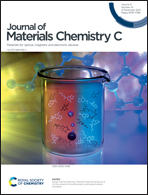Glucose-assisted synthesis of a SnSx coated lithium titanate anode material for lithium-ion batteries†
Abstract
Low capacity and poor rate performance are still the main obstacles to the application of lithium titanate as anode materials for lithium-ion batteries. In this paper, commercial lithium titanate was used as the substrate, and the solvothermal method was used to realize the co-coating of C and SnSx in one step. The rough surface of LTO can provide a large number of accessible active sites for the nucleation of glucose molecules, and Sn4+ can be tightly adsorbed by the abundant hydroxyl groups of glucose molecules. SnSx grows slowly and excessively small SnSx nanosheets tend to aggregate to form discrete microspheres. As a binder, glucose inhibits the growth and accumulation of large-sized layered SnSx, mediates the formation of small-sized SnSx nanosheets and promotes its coverage on the LTO surface. The electrochemical test results showed that the first discharge specific capacity of SnSx@C/LTO was 274.47 mA h g−1 at 10C. After 500 cycles, the capacity reached 227.53 mA h g−1, and the capacity retention rate was up to 82.89%. In addition, the LFP//SnSx@C/LTO full battery had a capacity of 150 mA h g−1 at 10C, which was better than that of the LFP//LTO (10C 68.6 mA h g−1).



 Please wait while we load your content...
Please wait while we load your content...